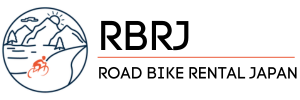
Visión general y guía de Kyoto en bicicleta: Moverse en bicicleta
Esta Guía de Ciclismo de Kioto le proporcionará una visión general de todo lo que necesita saber sobre el ciclismo en Kioto y sus alrededores.
Índice
- Por qué circular en bicicleta por Kioto >
- Diseño de Kioto >
- Consejos y normas de circulación >
- Alquilar una bicicleta >
- Rutas en bicicleta >
- Aparcamiento de bicicletas >
- Información útil para ciclistas >
- Reflexiones finales >
Por qué recorrer Kioto en bicicleta
Kioto cuenta con lugares increíbles para montar en bicicleta. Puedes escalar montañas, explorar bosques profundos, pedalear por ríos, atravesar pueblos pintorescos y pasear por el centro en busca del mejor espresso de la ciudad.
Cuando exploras en moto no sólo ves el punto A y el punto B, sino también las cosas imprevistas e inesperadas del camino.
En nuestra opinión, la bicicleta permite ver mucho más.
Joyas ocultas

Las aglomeraciones en la ciudad y en los principales lugares de interés pueden resultar desalentadoras, pero, por suerte, Kioto esconde muchas maravillas y encantos naturales más allá del centro y de los principales destinos turísticos.
Pedalear por las montañas, por las calles secundarias, por los tranquilos suburbios y por los pueblos agrícolas rurales le mostrará un lado único y auténtico de Japón que no podrá ver si se ciñe a los caminos trillados.
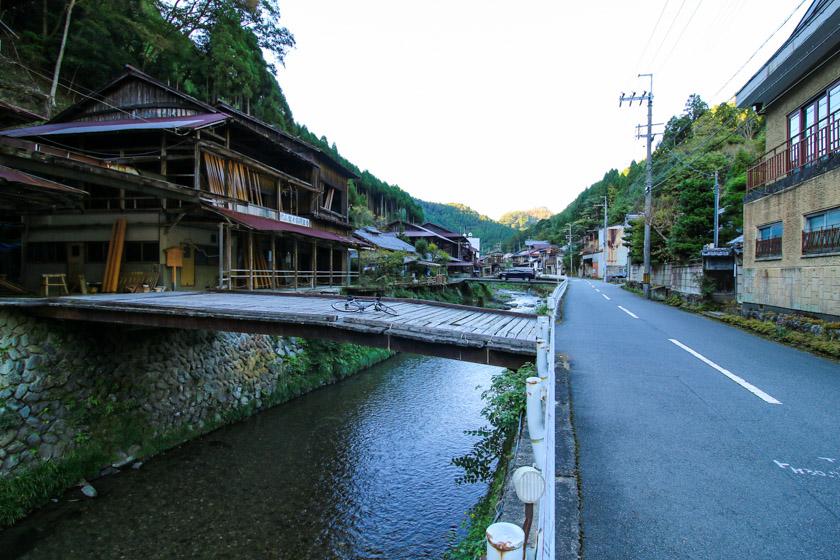
Hay tantos santuarios, templos, ríos e instantáneas sencillamente impresionantes del Japón más crudo que no aparecen en ninguna guía y con los que uno se tropieza literalmente cuando se aventura por zonas rurales y aisladas.
Estos momentos son algunos de los mejores y en Road Bike Rental Japan, nuestra misión es ayudar a la gente a experimentar más de estos momentos durante su estancia en Japón.
Naturaleza impresionante

Japón es un país realmente hermoso. Sin embargo, a veces los lugares de interés cultural mundialmente famosos y el bullicio de neón de las ciudades pueden eclipsarlo.
Hay montañas imponentes y escarpadas, ríos y valles que se extienden a sus pies, aldeas rurales con el encanto distintivo que sólo se encuentra en Japón, santuarios locales místicos escondidos en rincones del país, vastos bosques que parecen tragarle entero y océanos y playas que le harán desnudarse a mitad de camino y saltar para darse un chapuzón.
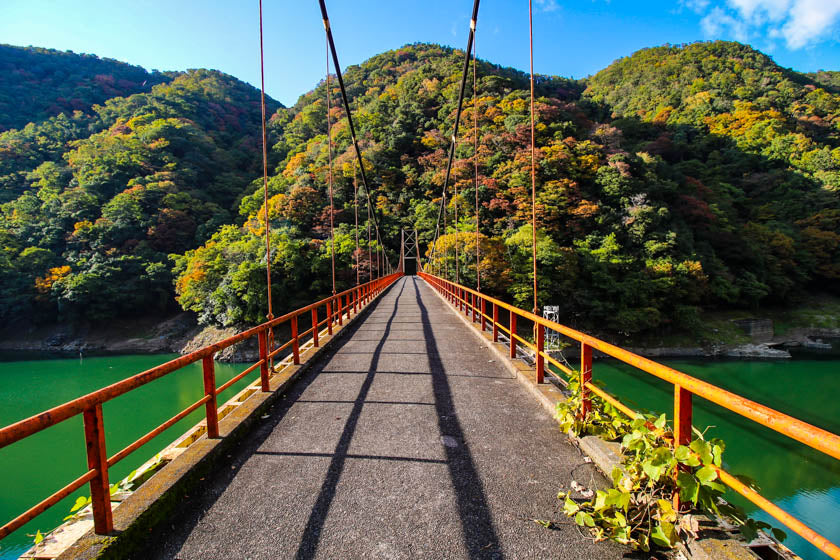
Si coges trenes y autobuses a todas partes puedes perderte mucho de esto. Sin embargo, ir en bicicleta es la mejor manera de descubrir la auténtica belleza natural de Japón, y estamos seguros de que no te decepcionará.
Velocidad

Las bicicletas son más rápidas que los desplazamientos a pie y, por lo tanto, permiten cubrir más terreno con menos esfuerzo que cuando se camina.
Estamos de acuerdo, hay veces en las zonas más concurridas en las que es mejor bajarse de la bici y pasear, pero normalmente la bici te permitirá desplazarte más rápido y además podrás disfrutar del viento en tu pelo.
Divertido, sano y bueno para el medio ambiente

Montar en bicicleta es divertido. Hay muchas explicaciones científicas que intentan explicar por qué, pero cuando haces girar esos pedales, haces que la sangre bombee y despiertas esas endorfinas, simplemente te sientes bien.
El ejercicio te pone de mejor humor y montar en bicicleta es también una forma estupenda de equilibrar todo el exceso de comida y bebida que probablemente estés haciendo en vacaciones. La comida en Japón es épica y las cervezas fluyen libremente en los restaurantes locales, y hacer algo de ejercicio durante tu viaje puede hacer que te sientas bien.
Además, la bicicleta utiliza un mínimo de combustibles fósiles y es un medio de transporte no contaminante.
El cambio climático es el mayor reto al que se enfrenta el mundo y creemos que hay que intentar reducir nuestras emisiones de carbono como sea.
La bicicleta como medio de transporte es mejor para el medio ambiente y esperamos que guías como ésta desempeñen un pequeño papel a la hora de animar a la gente a desplazarse por Kioto en bicicleta.
Diseño de Kioto
Kioto se encuentra en un valle y está rodeada de montañas al oeste, norte y este, siendo el monte Atago el pico más alto, con 924 m.
Kioto se encuentra al suroeste del mayor lago de agua dulce de Japón, el lago Biwa, aunque en realidad ninguna parte del lago entra en la prefectura de Kioto, ya que toda la masa de agua se encuentra en la prefectura de Shiga.
A lo largo de esta guía, cuando nos referimos a Kioto, nos referimos a la ciudad de Kioto y no a la prefectura de Kioto, mucho más extensa.
La ciudad de Kioto es la capital de la prefectura de Kioto y ocupa aproximadamente 18% del territorio de la prefectura.
Cuando pensamos en recorrer Kioto en bicicleta, resulta útil dividir la ciudad en las secciones que se indican a continuación:
- Noroeste de Kioto
- Noreste de Kioto
- Oeste de Kioto
- Este de Kioto
- Sudoeste de Kioto
- Sureste de Kioto
- El centro de Kioto
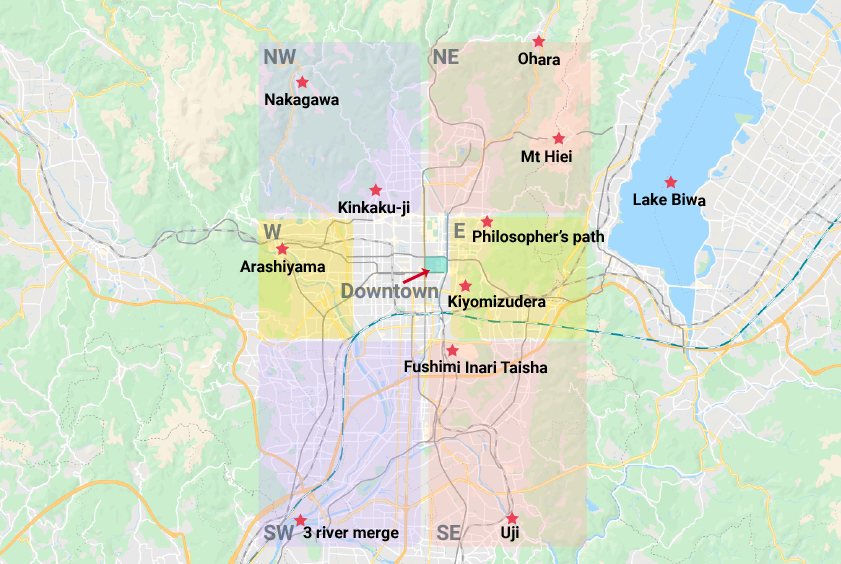
Centro de Kioto
Se considera que el centro limita con Karasuma-dori al oeste, Oike-dori al norte, el río Kamo al este y Shijo-dori al sur.
La zona es bastante pequeña (1 km2), por lo que es fácil recorrerla a pie.
Aunque no todo el mundo respeta las normas, está prohibido circular en bicicleta por las calles que se indican a continuación:
- Kawaramachi-dori, entre Oike-dori y Bukkoji-dori
- Shijo-dori, entre Higashioji-dori y Karasuma-dori
- Sanjo-dori, entre Kiyamachi-dori y Kawaramachi-dori
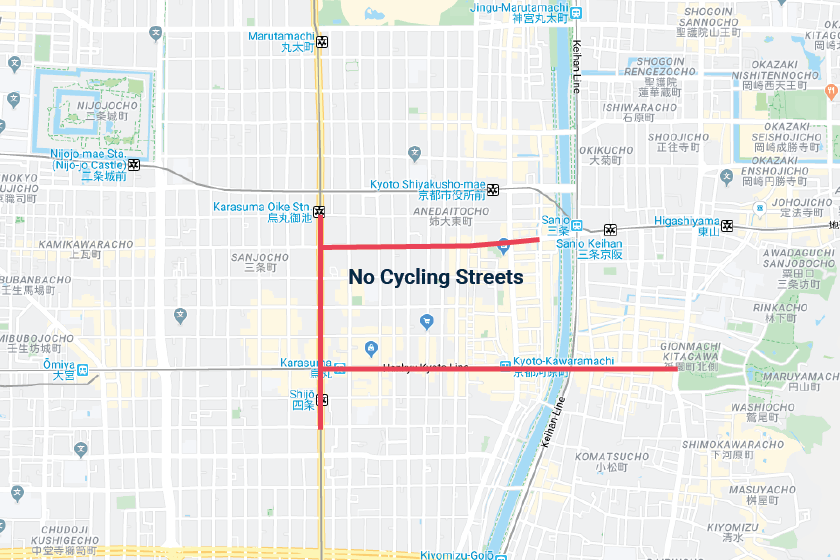
Aparte de las calles prohibidas (y otras calles que están restringidas a ciertas horas del día o durante ciertos acontecimientos durante el año), se puede circular y navegar por la ciudad de Kioto con bastante facilidad debido a la disposición en cuadrícula. Hay que tener en cuenta que hay bastante tráfico en las carreteras, lo que hace que las horas punta sean bastante congestionadas para circular por las calles.
También hay muchos semáforos, sobre todo en el centro de la ciudad, lo que hace que la marcha sea bastante lenta en algunas zonas.
También hay que lidiar con el tráfico de personas, formado por los lugareños en su vida cotidiana y el gran número de turistas que visitan Kioto cada año.

Al pasear por la ciudad, los ríos son una forma útil de escapar del tráfico y la contaminación de las calles. Si se encuentra en el centro de la ciudad o en el este de Kioto, puede recorrer el río Kamo, mientras que si está en el oeste puede tomar el río Katsura.
Oeste de Kioto - río Katsura y Arashiyama
El río Katsura, al oeste, es un buen punto de partida para subirse a la bicicleta y empezar a explorar.
Hay un carril bici a lo largo del río y el paseo tiene momentos preciosos para disfrutar mientras se pedalea.
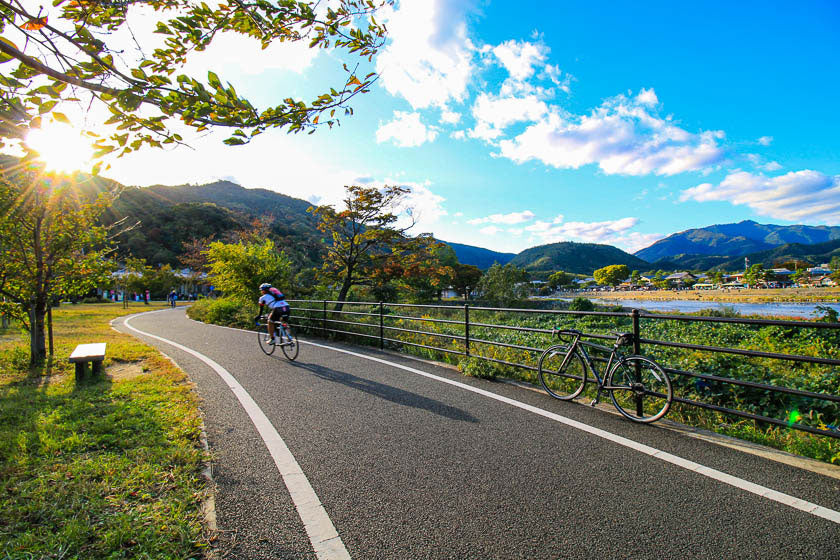
Puede empezar más al sur y dirigirse hacia Arashiyama o empezar en Arashiyama o Matsuo Taisha y dirigirse hacia el sur.
Arashiyama es una parte especial del mundo pero, como otros lugares de Kioto, se llena de turistas. El bosque de bambú, en particular, está muy congestionado, por lo que las primeras horas de la mañana o las últimas de la tarde son el mejor momento para visitarlo.
Una de las mejores partes de pedalear por Arashiyama no es pedalear por Arashiyama en sí, sino por el sendero del río que se dirige hacia el norte en dirección a Arashiyama. Las montañas serpentean por las crestas a medida que la mundialmente famosa zona se va revelando poco a poco en la distancia.
Norte de Kioto
Dividimos el norte de Kioto en secciones noroeste y noreste.
Noroeste - Montañas a Umegahata, Nakagawa y más
Las montañas del norte son impresionantes. Ofrecen subidas, bajadas, pueblecitos de postal y vistas y olores nítidos del bosque y el paisaje.
Los pinos de Japón son preciosos y, a medida que se adentra en las montañas, los vastos bosques pueden hacerle sentir aislado y en plena naturaleza.
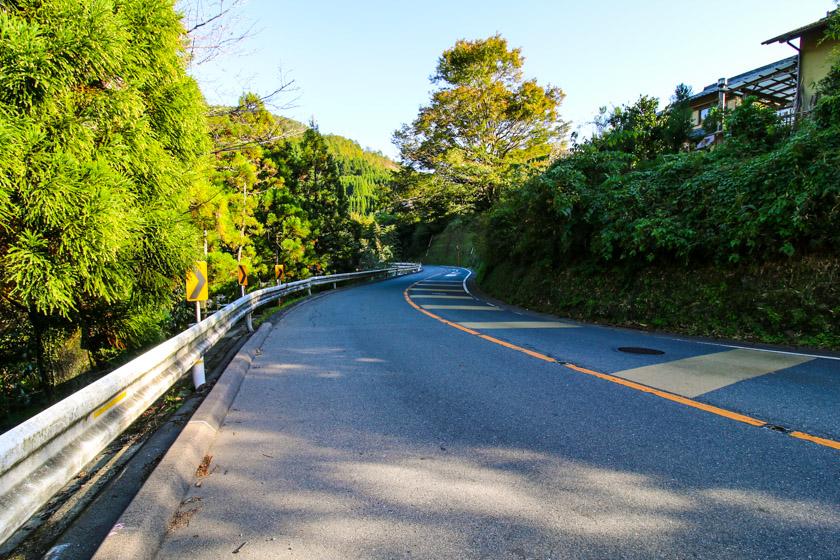
Las montañas del norte son de fácil acceso desde la ciudad, ya que a las rutas del noroeste se suele acceder al norte de Arashiyama y a través de Umegahata.
Noreste - Ohara y Mt Hiei y más
Hay numerosas zonas para recorrer en bicicleta y explorar en el noreste, siendo Ohara un centro neurálgico para muchas de las rutas de la zona.
Ohara es un simple paseo por la 367 justo después del parque del estanque de Takara-ga-ike y la estación de Takaragaike.
Las carreteras de montaña también suben, atraviesan y sobrepasan el monte Hiei, más al este.
El monte Hiei es la segunda montaña más alta de Kioto, y hay algunas subidas importantes si quiere esforzarse y acelerar el corazón.

Si se sube y cruza la montaña se desciende hasta el lago Biwa, también muy popular entre los ciclistas.
Este de Kioto
El este de Kioto se considera probablemente la otra orilla del río Kamo y la zona incluye algunos de los lugares más famosos y visitados de Kioto.
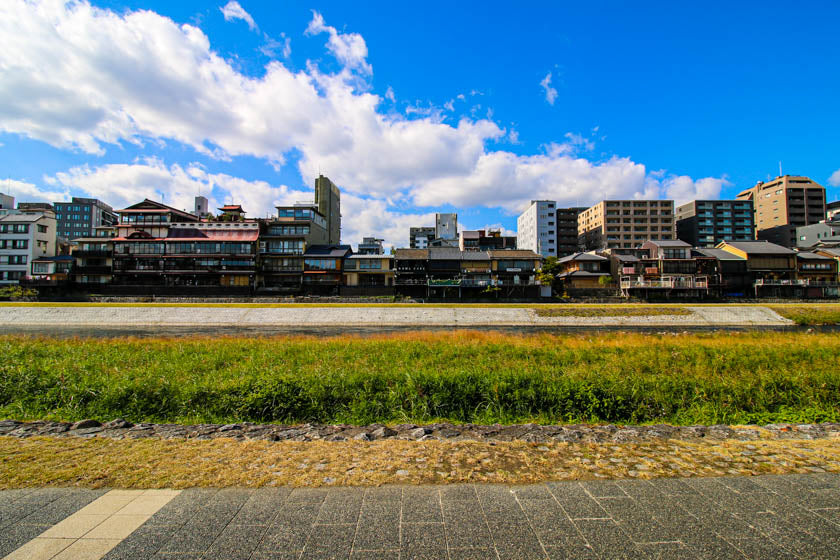
Encontrará el camino del Filósofo directamente al este de la Universidad de Kioto, Nanzen-ji al sur de allí y el templo Kiyomizu dera más al sur de nuevo.
En el este se practica mucho ciclismo, y muchos turistas recorren la encantadora zona de Higashiyama disfrutando de las vistas.
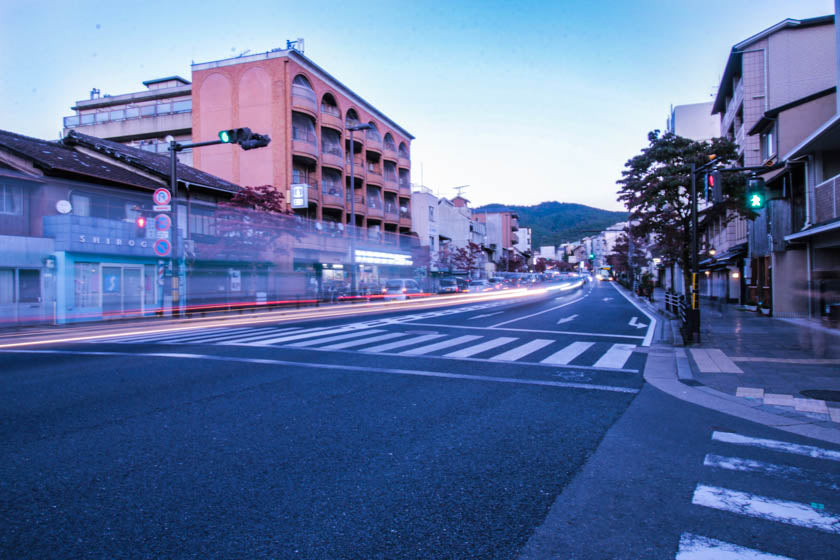
Si lo desea, puede tomar el Sanjo dori colina arriba, pasando por la estación de Keage y por detrás de Kiyomizudera, para acabar en Otsu.
Puede haber mucho tráfico alrededor de la estación de Shinomiya, el intercambiador de Kyoto Higashi y a lo largo de la ruta 1 hasta Otsu, así que evite las horas punta si puede para disfrutar más del viaje.
Sur de Kioto
El sur también se divide en secciones suroeste y sureste.
Sureste - Uji y hacia Nara
Las rutas y zonas del sureste también ofrecen algunas zonas maravillosas para ir en bicicleta. El santuario de Fushimi Inari es un lugar precioso para visitar, pero hay que recorrerlo a pie, así que si quieres visitarlo llega pronto para evitar las aglomeraciones.
El viaje a Uji es una de las rutas obligadas para los ciclistas que deseen disfrutar de un paisaje impresionante.
El trayecto hasta Uji fue bastante bueno, con algunas partes urbanas interesantes pero algunas carreteras con algo de tráfico. Sin embargo, una vez que se llega a Uji y se empieza a remontar el río Uji y luego el Seta, cualquier idea de tráfico desaparece rápidamente.

La carretera que bordea el río es espectacular.
Las sinuosas carreteras son un auténtico placer para la bicicleta, y las espectaculares vistas del río y los puentes a lo largo del recorrido constituyen una fantástica experiencia ciclista.

Para ver la ruta y leer más sobre el recorrido en detalle, consulte nuestra sección Rutas ciclistas de la guía.
El sudeste suele ser el punto de acceso para descender a Nara, un recorrido clásico que no decepciona. La ruta incluye espesos bosques, carreteras ribereñas, granjas, fauna salvaje (ciervos en Nara) y algunas subidas épicas.
También puede encontrar un enlace a un bucle de Kioto a Nara en la sección Rutas ciclistas.
Suroeste - río Katsura, confluencia de tres ríos
El sur de Kioto también es popular entre los ciclistas, ya que suele ser la puerta de entrada de los que se dirigen a Osaka por el río Yodo o a Nara por el río Kizu.
En el sur se encuentra la confluencia de tres ríos: el Katsu, el Uji y el Kizu, que se funden en el Yodo.
Desde allí se puede descender por el río Kizu más al sur hasta Nara, tomar el río Uji hacia el este o saltar al río Yodo y hacer el trayecto hasta Osaka.
Encontrará información detallada sobre las rutas en la sección Rutas ciclistas de la guía.
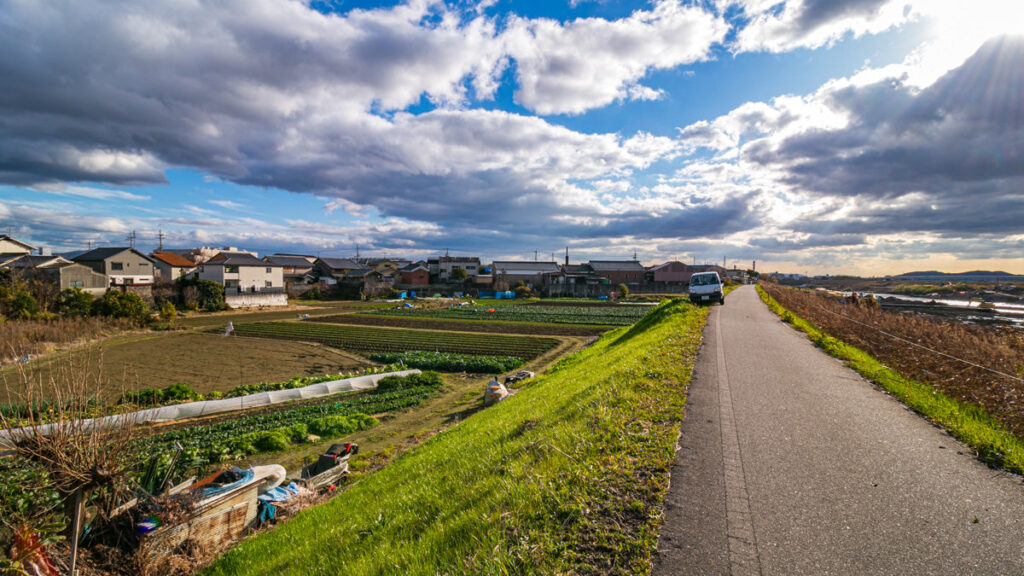
Consejos y normas de circulación
Circular por la izquierda

En Japón se circula por la izquierda. Esta es la regla número uno para los ciclistas que llegan a Japón, porque si vienes de un país en el que se conduce por la derecha, te costará un poco acostumbrarte.
¿Sendero o carretera?

Hay que circular siempre por la izquierda de la calzada, a menos que haya una vía exclusiva para ciclistas. En Japón se puede circular libremente por las aceras, pero hay una ley que establece que se puede circular por ellas si hay una señal que lo indique.
Dicho esto, en Japón se ve mucha gente circulando por las aceras, por lo que no creemos que la policía te detenga nunca, a no ser que trates de atravesar en bici una calle muy transitada por peatones.
Cascos

Recientemente han cambiado las leyes japonesas que obligan a todos los ciclistas a llevar casco. En RBRJ, siempre recomendamos el uso del casco, pero se dará cuenta de que la mayoría de las personas que circulan en bicicleta por las ciudades y los suburbios no lo llevan.
Para que te sientas cómodo, siempre puedes traerte el casco de casa, pero si no es así, la mayoría de las tiendas de alquiler deberían proporcionarte un casco con el alquiler de la bicicleta.
¿Es seguro montar en bici?

En general, Japón me parece un lugar bastante seguro para ir en bicicleta.
Parece haber mucha menos agresividad por parte de los conductores que en Occidente, y los conductores tienden a entender y a tener más en cuenta a los ciclistas. Creo que esto tiene algo que ver con el hecho de que la mayoría de la gente que conduce también va en bici. Puede que no sean ciclistas de carretera, pero probablemente tengan una bicicleta urbana con la que van al supermercado, a la estación de tren o a su barrio.
Por supuesto, todavía hay algunos conductores agresivos en Japón, así que mantén la concentración y peca de defensivo cuando circules entre el tráfico y no tendrás ningún problema.
Alquilar una bicicleta
Alquilar una bicicleta en Kioto es bastante fácil. Hay muchos lugares que alquilan las bicicletas urbanas básicas y las tarifas diarias no son tan caras.
Los hoteles también tienen a veces un servicio de alquiler de bicicletas para los huéspedes, así que consulte con su alojamiento, ya que es posible que el alquiler de bicicletas esté incluido en la habitación.
La bicicleta básica que transporta a la mayoría de la población local en su día a día se llama Mamma-chari. Se trata de una bicicleta de una sola velocidad con una cesta en la parte delantera.
Si desea una bicicleta con algunas marchas, existen varias opciones, muchas de ellas con manillar plano.
En el caso de las motos de carretera y deportivas, la oferta es mucho más limitada.
En RBRJ, estamos especializados en motos de carretera y de paseo de alto rendimiento y también disponemos de una sólida gama de motos de paseo.
Para ver la gama de bicicletas de carretera y de paseo, consulte el siguiente enlace:
Gama de bicicletas de carretera y de paseo >
Rutas ciclistas
Hay muchas zonas diferentes por las que puede pasear en bicicleta en Kioto. Desde acercarse a la ciudad y los suburbios hasta salir de la ciudad y encontrar algunos bosques aislados y tranquilos pueblos rurales.
Para que te hagas una idea general de por dónde circulan los ciclistas en Kioto, echa un vistazo al siguiente mapa de calor de Strava: las líneas rojas indican la actividad ciclista.
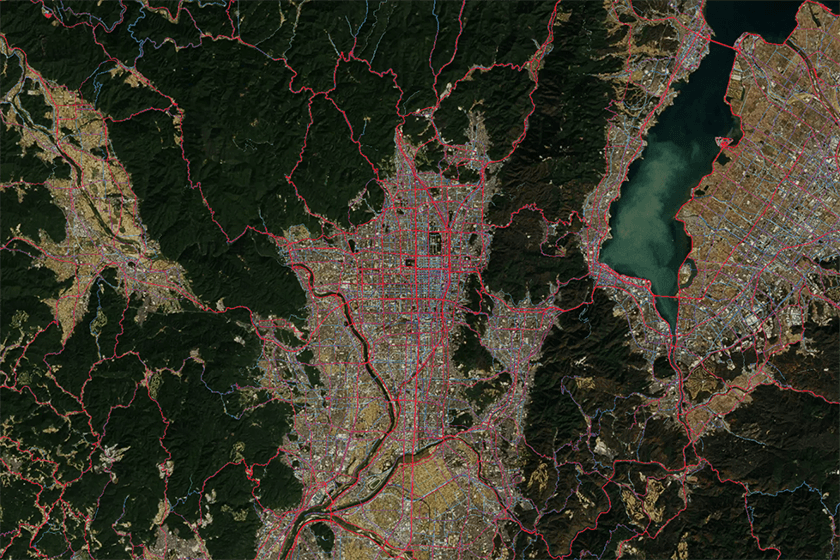
A continuación se muestran algunas rutas ciclistas de ejemplo que se dividen en:
- Rutas más cortas
- Rutas de longitud media
- Rutas más largas
Rutas más cortas
De Sanjo al Camino del Filósofo
Distancia: 4,6 km
Ganancia de elevación: 84m
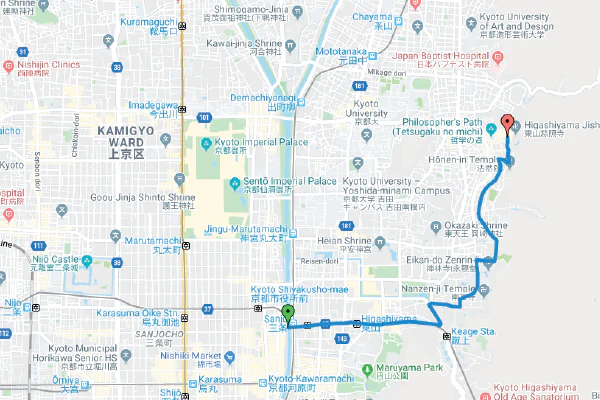
De Arashiyama a la confluencia de 3 ríos
Distancia: 20km
Elevación: 93m

Rutas de longitud media
Bucle noreste y norte - Ohara y Kamo
Distancia: 40,27 km
Elevación: 474m
Ver ruta en Google maps >

Paseo por las montañas del noroeste - Umegahata, Nakagawa
Distancia: 58km
Ganancia de elevación: 865m
Ver ruta en Google maps >
Enlace a la guía de rutas y al blog

De Kioto a Osaka - Ríos Katsura y Yodo
Distancia: 49km
Elevación: 308m
Enlace a la guía de rutas y al blog >

Rutas más largas
Kyoto a Uji a Otsu - vuelta a la ciudad de Kyoto
Distancia: 70km
Ganancia de elevación: 903m
Enlace a la guía de rutas y al blog >

Circuito por Kioto y el lago Biwa
Distancia: 218km
Elevación: 1,184m
Enlace a la guía de rutas y al blog >

Aparcamiento de bicicletas
Teniendo en cuenta la cantidad de gente que va en bicicleta en Kioto, el aparcamiento de bicicletas no es especialmente bueno.
A la hora de aparcar su bicicleta en Kioto, tiene prácticamente las siguientes opciones:
- Plazas libres
- Plazas de pago
- Lugares que siempre debe evitar
Plazas libres
En las zonas menos concurridas, las bicicletas suelen poder aparcarse gratuitamente en las aceras y carreteras sin ningún problema. Por ejemplo, si paras a comer en un restaurante, normalmente puedes aparcar la bici en la puerta mientras comes sin problemas.
El restaurante o centro comercial puede incluso disponer de un aparcamiento de bicicletas para los clientes.
Un punto clave aquí es que aparcas tu moto durante un tiempo limitado. Si te diriges a la tienda, compras un par de cosas y luego vuelves a la moto rápidamente, probablemente no te pasará nada.
Pero, si dejas tu moto durante horas o, peor aún, días, la posibilidad de que te la quiten de los lugares aparentemente seguros y libres aumenta.
Plazas de pago
En la ciudad encontrarás aparcamientos cerrados que podrás utilizar libremente la mayor parte del tiempo. Sólo tienes que meter la rueda, esperar a que se bloquee y salir. Cuando vuelvas, introduce el número de tu bicicleta en la máquina y paga la pequeña tarifa, que suele ser de 100 o 200 yenes.
Algunos aparcamientos para bicicletas son principalmente para propietarios que pagan por una plaza mensual o anual, pero algunos de estos lugares también aceptan aparcamientos diarios por una pequeña tarifa.
No hay aparcamiento
Sin embargo, en las zonas más concurridas de la ciudad hay lugares donde no se debe aparcar la bicicleta, ni siquiera durante unos minutos. Lugares como el exterior de las principales estaciones de tren, grandes almacenes, edificios de oficinas en el CBD y tiendas de lujo están bastante regulados y te encontrarás con una etiqueta de advertencia seguida rápidamente de la retirada de tu bicicleta si no la mueves lo antes posible.
Si la barredora de bicicletas de la ciudad se lleva tu bici, busca en el suelo un papel pegado que te indique dónde se la han llevado. Si vas allí con la llave de la bici, te la devolverán previo pago.
Solemos recomendar ser precavidos con el aparcamiento, sobre todo si tienes una bici más cara. Si hay un aparcamiento de pago cerca de tu hotel, es buena idea utilizarlo y también el candado de tu bici.
Merece la pena preguntar en el hotel si se puede guardar la bici dentro o si tienen aparcamiento para bicis. Algunos hoteles lo tienen, pero muchos te pedirán que busques aparcamiento para bicis fuera, así que si es así, pregúntales si hay un aparcamiento de pago cerca.
Información útil para ciclistas
A continuación encontrará información útil que puede resultarle útil mientras recorre Kioto en bicicleta.
Tiendas para comprar material o repararlo

Y's Road Kioto
Y's road Kyoto tiene una gran variedad de bicicletas y piezas de recambio, y el personal es muy competente. Hay asistencia básica en inglés (dependiendo del miembro del personal) y si necesitas reparaciones son fiables y tampoco son tan caras. Ubicación de la tienda aquí >
La verdad es que la página web es un poco desastre y podría mejorarse mucho. Lo mejor es visitar la tienda y echar un vistazo a la gama y hablar con el personal si es necesario.
Las mejores estaciones para ir en bici

Las mejores estaciones para recorrer Kioto en bicicleta son primavera y otoño. También se puede ir en bicicleta en verano e invierno, pero hay que tener cuidado con el calor y la humedad extremos del verano y con las temperaturas bajo cero del invierno, que provocan nieve y heladas peligrosas en las carreteras.
Primavera
El tiempo en primavera es precioso y, si tiene suerte, podrá contemplar los cerezos en flor mientras conduce.
En marzo puede hacer algo de frío, pero marzo, abril y mayo nos parecen fantásticos para ir en bicicleta. Mayo es un poco más cálido que marzo, pero recuerde que la temporada de floración de los cerezos también trae multitudes, así que asegúrese de reservar con antelación y evite los lugares de mayor afluencia si puede. Diríjase a algunas rutas rurales o de montaña y probablemente presenciará asombrosos cerezos en flor por el campo que le harán detenerse y apreciar la vista.
Consulte en el siguiente enlace las temperaturas en Kioto en abril de 2023 >
Otoño
El otoño también es fantástico para el ciclismo y, en RBRJ, probablemente sea nuestro favorito. Los colores otoñales son espectaculares y además duran más que los cerezos en flor, lo que significa que tienes más posibilidades de captar la belleza de los colores cambiantes.
El buen tiempo para montar en bicicleta también dura probablemente un poco más que la primavera. Septiembre puede seguir siendo muy caluroso a principios de mes, pero empieza a refrescar y desde mediados de septiembre hasta diciembre Japón es ideal para salir en bicicleta.
Consulte en el siguiente enlace las temperaturas en Kioto en octubre de 2023 >
Verano
También puedes ir en bici en verano, pero si realmente sientes el calor, puede que el verano sea demasiado para ti. La humedad y el calor pueden hacer que pases unos días abrasadores bajo el sol. Si te subes a la bici, ten cuidado y asegúrate de hacer descansos y beber suficiente agua.
Consulte en el siguiente enlace las temperaturas en Kioto en julio de 2023 >
Invierno
El invierno también puede ser un buen día para montar en bicicleta. El otro día hicimos 13 grados bajo el sol y todos pensamos que era el tiempo ideal para montar en bicicleta. Sin embargo, puede hacer mucho frío y, si no llevas el equipo adecuado, puedes sentirte incómodo rápidamente.
Por no hablar de la posibilidad de nieve y hielo, así que tenga cuidado en las carreteras e intente consultar el tiempo con antelación para planificar sus días.
Por supuesto, cuanto mayor sea la altitud, mayor será la probabilidad de que haya nieve y hielo en las carreteras, por lo que si se dirige a las montañas, esté atento al hielo y la nieve en las carreteras.
Consulte en el siguiente enlace las temperaturas en Kioto en enero de 2023 >
Transporte en bicicleta

Si desea llevar su bicicleta en el tren, puede hacerlo, pero deberá cubrirla por completo. Para ver la entrada completa de nuestro blog sobre cómo llevar la bicicleta en el tren en Japón, consulta el siguiente enlace en nuestro sitio web de Osaka:
Llevar bicicletas en tren en Japón - guía e instrucciones sobre el uso de una bolsa de tren >
Seguro a terceros

En cada vez más prefecturas de Japón, el seguro a terceros de bienes y personas se está convirtiendo en obligatorio para los ciclistas. No sólo para los ciclistas locales, sino también para los visitantes extranjeros.
Si alquilas una moto, comprueba con la tienda de alquiler que la moto tiene seguro a terceros y, si no lo tienen, te aconsejamos que busques un lugar que sí lo tenga.
Si te traes la bici de casa, también tienes que asegurarte, lo que puede resultar complicado, ya que normalmente se hace en japonés. 7/11 ofrece un seguro de pago por uso que puedes contratar en sus quioscos.
Pregunte al personal si puede ayudarle a contratar el seguro y, con suerte, le atenderán en inglés.
Todos los alquileres de bicicletas de RBRJ están cubiertos frente a daños materiales y personales a terceros. Puedes encontrar más detalles sobre el seguro en el siguiente enlace:
Contactos de emergencia

Durante su estancia en Kioto, y especialmente si va en bicicleta, existe la posibilidad de que necesite servicios médicos en algún momento. Aunque Japón es un país muy seguro y el ciclismo aquí también es bastante seguro, es bueno prepararse en caso de accidente o lesión.
Algunos puntos a tener en cuenta son:
- Conozca su hospital o clínica local
- Asegúrese de tener un seguro de viaje que cubra las facturas médicas
- No dé por sentado que el hospital está abierto por la noche o los fines de semana.
- Marque 119 para bomberos y ambulancias
- Marque 110 para la policía
Conozca su hospital local
En primer lugar, conviene comprobar dónde está su hospital local.
Si tiene un problema médico más grave, es mejor que acuda a un hospital más grande. Sin embargo, para resfriados comunes y problemas menos graves, puede consultar a un médico en una clínica local que le derivará a un hospital si lo considera necesario.
Seguro de viaje
Asegúrate de venir con un seguro de viaje, sobre todo si piensas practicar ciclismo. La atención sanitaria en Japón es excelente y también muy asequible, aunque si no tienes seguro pagarás 100% y si es un tratamiento complicado puede salirte muy caro.
No dé por hecho que el hospital está abierto
Algunos hospitales y clínicas cierran tarde por la noche y también los fines de semana. Comprueba primero en Google si el hospital está abierto antes de ir allí.
Números de emergencia
En Japón, hay un número distinto para ambulancias y bomberos, y para la policía. Marque 119 para ambulancias o bomberos y 110 para la policía.
Suele haber asistencia telefónica en inglés, pero intente relajarse y hablar despacio para que el operador entienda su situación.
- 119 para bomberos y ambulancias
- 110 para la policía
Reflexiones finales
Creemos que desplazarse en bicicleta es la mejor forma de ver Kioto y esperamos que la información de esta guía le resulte útil si decide montar en bicicleta durante su estancia en la antigua capital.
Esta guía y resumen de Kyoto Cycyling se actualizará periódicamente con nueva información para ciclistas, así que si tienes alguna idea o enlace útil que hayamos pasado por alto, háznoslo saber en los comentarios e intentaremos incluirlos.
Disfrute de su tiempo en bicicleta por Kioto y, si tiene alguna pregunta, póngase en contacto con nosotros en cualquier momento.
